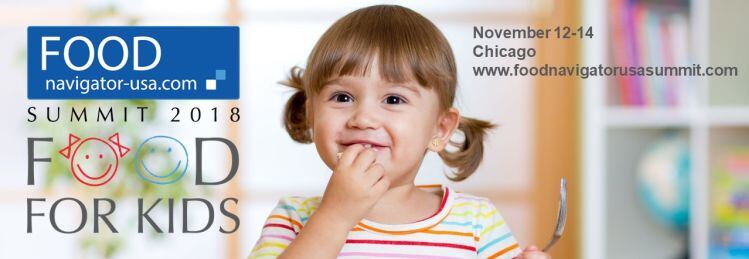According to the most recent data from the National Health and Nutrition Examination Survey (NHANES) captured in 2015 and 2016, “there is a brief uptick” in the prevalence of obesity in children aged two to 19 years old from 17% to 18.5%, William Dietz, chair of the Sumner M Redstone Global Center for Prevention and Wellness at Milken Institute School of Public Health at George Washington University, told attendees at the Partnership for a Healthier America Summit in Washington this month.
He acknowledged that the change is small, but after years of holding “pretty steady, particularly since about 2003-2004,” the directional shift “begs the question: Are we making progress or has progress stalled?”
Additional NHANES data focused just on 2- to 5-year-olds added to the concern. Specifically, the prevalence in obesity among this group fell from 12% in 2009-2010 to 8.5% to 2011-12, which Dietz said “was reassuring” because it showed a decline over multiple cycles, suggesting the change was part of a larger trend rather than a fluke. However, in 2013-2014 the tide appeared to change with the prevalence sneaking up to 9.4% and then up to 14% in the following period, he said.
“This increase got everyone’s attention” and fueled growing fears that efforts to reduce childhood obesity were failing, he added.
However, numbers are not always want they seem, Dietz explained. In this case, the size of the study population and how the data is collected each cycle could skew the findings.
“I calculated how big an increase, how many kids had to shift from the sample in 2013-2014 and 2015-2016 to account for this increased prevalence from 9.4% to 14% and this is a shift of 31 kids. So, not very many. And the sample size for the 2- to 5-year-olds is only about 800 children to begin with,” he said.
In addition, he explained, NHANES data comes from California and five other states and locations that change each cycle.
“We know from data from California and Massachusetts that the distribution of obesity is widely different across the states. So, it is conceivable they just sampled a group that had an excessive prevalence of obesity,” he said.
Other research reinforces progress
And finally, he said, the NHANES data should be considered within the context of the larger body of research.
For example, data collected from participants in the Special Supplemental Nutrition Program for Women, Infants, and Children (WIC), which accounts for about 30% of the children in the US under the age of four years, shows “success,” Dietz said.
He noted that obesity among this group increased steadily from 14% in 2000 to 15.5% in 2004 to 15.9% in 2010. But at that point, it starts to decline to 14.5% in 2014. In addition, Dietz said, the rate of obesity fell further among non-white ethnic groups, which is “quite unusual and distinctly contradicts what we have seen elsewhere.”
He explained the drop from 2010 onwards to changes made in the WIC package, including the addition of more fruits and vegetables, lower quantities of milk, lower caloric milk and about 9,000 calories less of food per month in the diets of the children who participated.
“This is more than enough to account for this decline, and a really good example of a federal program” influencing the prevalence of obesity, he said.
Taking a step back to look at all the research together, Dietz said the “jury is still out” on the long term impact of recent efforts to reduce childhood obesity, but given the potential for success, he encouraged companies and public health advocates to continue their efforts to cut from children’s diets excessive calories and nutrients of concern, including fat, sugar and sodium.
Editor's note: Want to learn more about what kids are eating and how industry is striving to improve their options? Then join FoodNavigator-USA this November in Chicago for its annual summit focused this year on FOOD FOR KIDS. Get all the details HERE.

